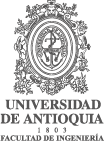Energy diagnosis and structuring an energy saving proposal for the metal casting industry: An experience in Colombia
The increase of energy efficiency is an option to reduce greenhouse gas emissions (GHG). This benefits the industrial sector by reducing the energy consumption required to manufacture products, increasing production levels, and improving the competitiveness of the industry at a national and international level.
In this project, a diagnosis of the energy efficiency of the ferrous and non-ferrous metal casting industrial sector in the Valle del Cauca and Cauca region was carried out. This sector represents 7% of Colombia’s total industries and consumes about 10% of the total energy consumed by all industries; of which 84.7% corresponds to energy of thermal origin, while the remaining 15.3% corresponds to electric power, with a total consumption for the year 2012 of 232.069 terajoules.
In the Valle del Cauca Department, there are 24 establishments engaged in the casting of metals, i.e. 17.3% of Colombia’s total metal casting industry. The project involved five metal casting businesses from the department of Valle del Cauca and Cauca, in which the energy consumption, along with the respective loss of energy in the metal casting process were evaluated. The results of the energy diagnosis show that energy losses through the fuel gases are the main source of energy loss in the aluminium casting systems, the heating of steel billets and the heat treatments, representing a total loss of 54.2%. One of the causes is the average temperature of the flue gas output in different industrial processes, 654.8 °C, along with the high percentages of excess air in the combustion. The proposals intend to reduce these sources of energy loss through the use of available measures or technologies that could make the industrial processes more efficient and competitive. These include: heat recovery from fuel gases to heat combustion air (RCGCA), air–fuel ratio control (CRAC), implementation of oxygen enriched technology (EACOX), implementation of a system of electric power generation by means of an Organic Rankine Cycle (ORC), self-restoring or self-regenerating burners (QAR), flameless burners (QF) Combustion gas heat recovery to preheat the raw material (RCGCM). The multi-criteria method used to select the best proposals for the energy efficiency program in the metal casting sector is known as the analytic Hierarchy Process (AHP), where it is concluded that the most feasible proposals are the control of the air–fuel ratio (CRAC), heat recovery of the fuel gases to heat the air (RCGCA), the implementation of self-recuperative or self-regenerating burners (QAR), and the implementation of an Organic Rankine Cycle for the generation of electric energy (ORC).

